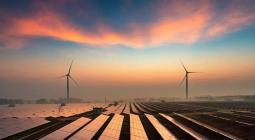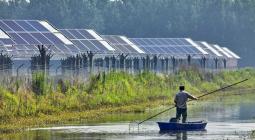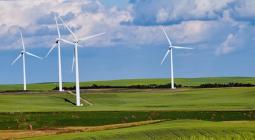What’s Holding The Renewable Revolution Back?

For at least the last decade, renewable energy seems to have been accelerating at a ferocious pace. Every other day you can read about a new technological breakthrough or another incredible milestone being achieved. And yet… overall energy consumption continues to be dominated by fossil fuels.
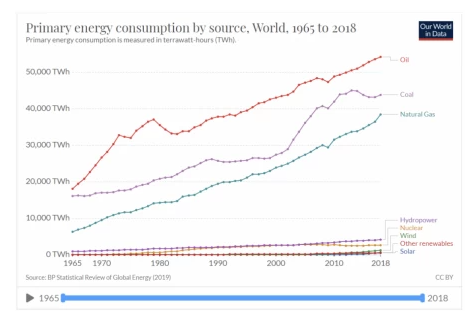
While the achievements made in the renewable energy space, some of which are listed below, are undoubtedly impressive, there is a long way to go before a full energy transition can take place.
Even in the U.S., where many of the global clean energy giants are based, renewable energy only made up 11 percent of the national primary energy consumption in 2018.
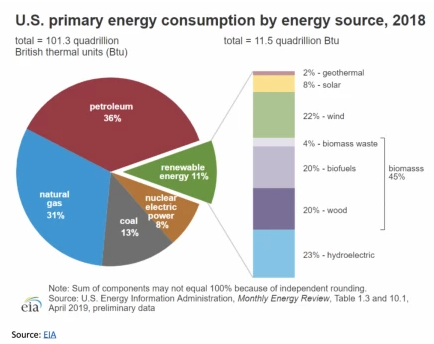
But before analyzing why the much-talked-about renewable energy boom has yet to significantly impact the fossil fuel industry, a quick overview of the renewable successes in the last decade is necessary.
The Decade of the Renewable Revolution
In 2010, more than 15 GW of solar was installed globally in a single year for the first time ever. By 2018, that number had soared to 102 GW.
In 2011, the U.S. Department of Energy launched the SunShot Initiative, aiming to make solar costs competitive with other forms of energy. The initiative reached its 2020 goal three years early.
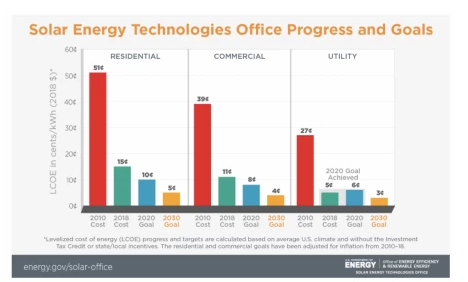
In 2012, 7.6 gigawatts of PV panels were installed in Germany alone, as the nation strove to become a global leader in renewable energy.
In 2013, wind power became cost-competitive with both natural gas and coal, with some wind farms in the Midwest signing power agreements at as low as $25 per megawatt-hour.
In 2014, the Ivanpah Solar Facility opened in the Mojave Desert with the potential to power 100,000 Californian homes and prove the viability of large-scale solar.
In 2015, 153 GW of renewable energy was installed, which was more than the amount of conventional fossil fuel added that year. This prompted Fatih Birol to claim that “We are witnessing a transformation of global power markets led by renewables”.
In 2016, Portugal ran for four days straight on renewable energy alone, with solar, wind and hydropower sourcing all of the country’s electricity consumption for 107 hours.
In 2017, renewable energy surpassed nuclear energy as a percentage of U.S. energy generation for the first time in the modern nuclear era.
In 2018, California approved a historic policy that required all new homes in the state to incorporate solar panels as of 2020. Legislative wins like this for the clean energy industry shows that there is plenty of political will behind the renewable revolution.
In 2019, the UK generated more of its energy from zero-carbon sources than from all fossil fuels combined for the first time since the industrial revolution.
An impressive list of renewable energy milestones. But there have been plenty of obstacles for the industry to overcome and the reality is that big ambitions and even an increasing amount of political will aren’t going to be enough
What’s stopping renewables?
The single most important issue when it comes to integrating renewables into our energy mix is the lack of energy storage. Our national power grids must constantly and reliably balance supply and demand, a task that is made difficult by the tendency for renewable supply to surge or crash along with the sunlight, wind, and waves. Sufficient and efficient energy storage would take care of that problem, but it is proving very difficult to produce at competitive prices.
Another key issue with renewables is the space required to produce significant amounts of energy. The largest wind farm in the world, China’s Gansu Guazhou Beidaqiao project, takes up 30 square kilometers of space. The largest solar plant in the world, the UAE’s Noor Abu Dhabi, takes up 8 square kilometers. A majority of these major projects are built in the desert, but that is not a realistic solution if renewables are going to become our go-to energy source.
Finally, as ironic as it sounds, renewable energy has an environmental problem. Solar plants, wind farms, and hydroelectric dams have all been accused of negatively impacting the ecosystems into which they are placed. From killing rare species of birds to altering the flow of rivers and producing chemical byproducts during production and disposal, there are plenty of environmental problems facing the clean energy revolution. It is this problem in particular that has proponents of nuclear energy up in arms.
The solutions
While these key bottlenecks have slowed the renewable energy’s advance, they are slowly but surely being dealt with in a variety of ways.
The first issue, of efficient and cheap energy storage, is currently seen by many as the holy grail of energy advancement. Tesla is already doing its part on this front, building the world’s largest lithium-ion battery in Australia. Around the world, flywheels, redox flow batteries, thermal storage, compressed air storage, and hydroelectric storage are all making the flow of renewable energy into our power grids more reliable.
As well as improved energy storage, another approach to dealing with the fact that national power grids are not designed for intermittent energy is to change the grids themselves. China is trialing a super grid that connects the regions that produce renewable energy to high consumption areas in order to reduce the amount of renewable energy wasted. Some scientists suggest that microgrids would be the way to go, taking renewable energy ‘off-grid’ and maximizing efficiency through lowering the demand and load for energy.
This microgrid approach also solves the other two major renewable energy issues. As long as renewable energy plants are required to charge huge areas, the size and therefore environmental impact will worsen. If, however, we can focus on high efficiency and low-consumption circuits with sufficient and efficient energy storage units attached – well, the dream of an entirely renewable world could one day be achieved.
15 April 2020
OILPRICE.COM

